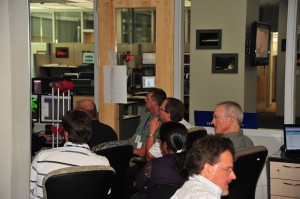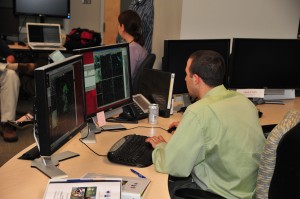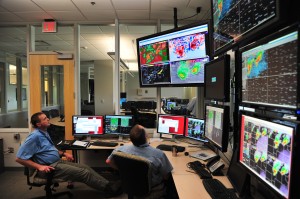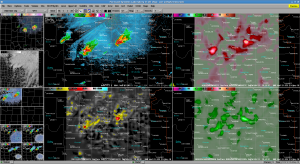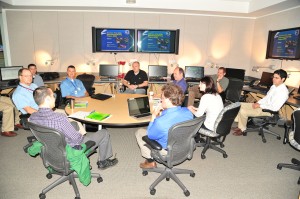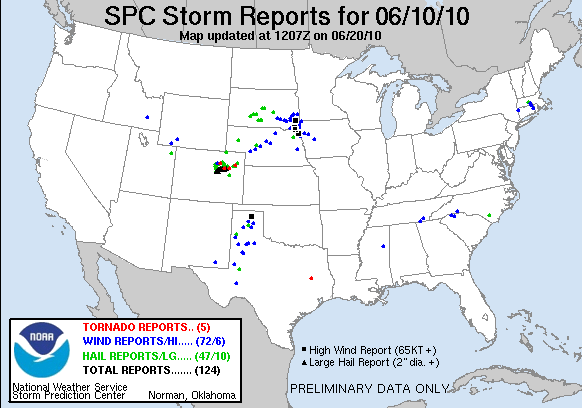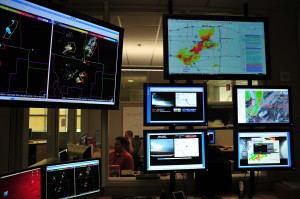Morning surface analysis shows surface low pressure over the northern TX panhandle, with a warm front extending ESE across northern OK and multiple drylines…one over western TX with dewpoints in the 20s behind it, another over western OK separating air with dewpoints in the 40s to the west and lower 60s to the east. Aloft, the 12Z NAM indicates mid level energy ejecting from the western closed low, with a mid level shortwave moving into southeast CO and southwest KS late in the day, with a weaker southern extension moving into western OK…while the northern TX low intensifes and retrogrades into northeast NM. NAM forecast soundings also show an 800 hPa capping inversion eroding late this afternoon over western OK.
With the eastern dryline already into western OK and a little farther east than the NAM forecast, think best chance for convective initiation will be over a narrow corridor in west central OK, beginning about 21Z-22Z, especially where low level convergence will be maximized near the intersection of the dryline and warm front just northwest of OKC. This plus strong veering wind profiles and SBCAPE values up to 2500 J/kg support idea of isolated surface-rooted supercells capable of producing large hail and tornadoes during this time, becoming elevated later this evening as they move east of OKC where the cap should hold. The 14Z HRRR and 12Z SPC WRF also lend support to this idea.
A much more conditional severe threat exists farther northwest into southeast CO and southwest KS north of the warm front, where lift will be better but instability more elevated in nature as the cap holds. Farther east across eastern OK, models (especially the OUN/SPC WRF) generate waa-induced showers along and north of the warm front, but instability is meager and do not expect CI algorithms to perform as well in this area.
Taking a look at high resolution simulated reflectivity, the RUC HRRR has been consistent in its past few runs of a lone supercell initiating and then propagating east. The NSSL WRF is similiar in this idea, though generates several training supercells. Both are in agreement for an area North and west of Norman. The 15Z OUN WRF was consistent with the 0z SPC 4 km WRF in not generating convective activity…and keeping things confined to weak echoes east of OKC. Now, a look at the 16z OUN WRF is now suggesting supercellular convective initiation similiar to the NSSL WRF. It indicates, Max column hail values in excess of 40 kg/m2, Updraft helicity in the 2-5 km layer indicates in excess of 300 m2/s2, and we are now seeing convective initiation from OUN WRF reflectivity. Timing of convective initation looks to be in the 21-23z time frame. The image below is the 16z OUN WRF model simulated reflectivity forecast at 23z, the first run to initiate convection over NW Oklahoma. Note also the model places updraft helicity in the correct conceptual model location, with the max hail slightly removed. Max column hail (integrated graupel) values greater than 40 kg/m2 and Updraft helicity in the 2-5 km layer in excess of 200 m2/s2 are indicative of strong mesocyclones, with is consistent with the high CAPE and strong low and mid level shear environment.
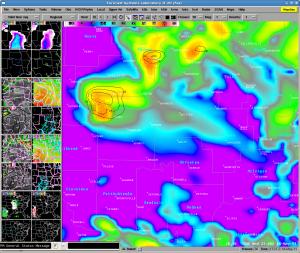
Therefore, it looks at this time with the plethora of data around OUN that this will be our area of focus this after to test the convective initiation products and to monitor the progresssion of the OUN WRF and other hi-res models, despite additional convective activity possible in SE Colorado.
Ongoing thunderstorms in the Mid Atlantic may serve as a possible alternative location in addition to SE Colorado, should convective activity fail to materialize in the southern plains. MUCAPE 500-1000 J/kg, effective bulk shear 30-40 kt there, and cold pool aloft with 500 hPa temperatures -18C to -20C are supportive of locally severe storms from the Delmarva northwest into southwest PA and WV…with the main threat large hail. Low LCL’s and localized/marginal 0-1km SREH of 100 m^2/s^2 also suggest brief tornado potential in new storms via stretching of rotating updrafts.
Goodman/Donofrio/Schultz

